Books by Silvia Tabusca, PhD
Editura Universul Juridic, 2024
DREPTURI CONSTITUȚIONALE, VULNERABILITĂȚI LEGISLATIVE ȘI MODALITĂȚI DE RECRUTARE
Human Trafficking, Public Health and the Law (Chapter 6 - Human Trafficking in Eastern Europe: The Case of Romania) - Thieme Verlag, Germany, English

The Romani Peoples and Their Right to Cultural Heritage: A Non-Roma Perspective - Wolters Kluwer, English
http://www.wolterskluwer.ro/variae/wolters-kluwer/the-romani-peoples-and-their-right-to-cultural-... more http://www.wolterskluwer.ro/variae/wolters-kluwer/the-romani-peoples-and-their-right-to-cultural-heritage
“Silvia Tabusca's book on the Roma peoples and their culture is a fascinating account of the history and life of communities radically different from mainstream modern society and its guiding lights. With appealing deep sympathy for the human beings involved, the author makes a compelling case for putting an end to the ubiquitous historic injustices of discrimination and for the tailoring of a legal regime to the specific needs and aspirations of the Roma, based on the global appreciation of cultural diversity within the framework of a world public order of human dignity”.
Professor Dr. iur. Siegfried Wiessner, Director, Graduate Program in Intercultural Human Rights, St. Thomas University School of Law, Miami, Florida; former Chair of the International Law Association's Committee on the Rights of Indigenous Peoples"

Impacts of the ECHR and ECJ's Decisions on the National Legal Systems - C.H. Beck, Romanian
"Protecţia juridică a drepturilor omului ocupă, în prezent, un loc important în rândul dezbateril... more "Protecţia juridică a drepturilor omului ocupă, în prezent, un loc important în rândul dezbaterilor publice naţionale şi internaţionale. Cunoaşterea conţinutului obligaţiilor ce revin autorităţilor administrative şi judiciare din România, ca urmare a ratificării Convenţiei europene a drepturilor omului şi a integrării în Uniunea Europeană, este indispensabilă pentru orice practician al dreptului deoarece sistemul naţional de drept nu a putut rămâne în afara sferei de influenţă legislativă şi jurisprudenţială a celor două ordini juridice europene.
Aderarea Uniunii Europene la Convenţie asigură un standard de protecţie a drepturilor omului şi libertăţilor fundamentale unitar şi comun întregii Europe. Prezenta şi viitoarea relaţie dintre Curtea Europeană a Drepturilor Omului şi Curtea de Justiţie a Uniunii Europene reprezintă o preocupare majoră ca urmare a adoptării, în martie 2011, a Acordului privind aderarea UE la Convenţie şi a reglementării controlului extern asupra hotărârilor Curţii de Justiţie a Uniunii Europene realizat de instanţa de la Strasbourg, fără ca acesta să afecteze în mod negativ autonomia Uniunii şi pe cea a Curţii.
Recomand călduros lucrarea de faţă care examinează locul şi rolul instanţelor de judecată în arhitectura judiciară europeană, interacţiunea celor trei sisteme diferite de drept aplicabile simultan în România (sistemul de drept european al Convenţiei cu jurisprudenţa Curţii Europene, sistemul de drept al Uniunii Europene cu jurisprudenţa Curţii de Justiţie şi sistemul naţional de drept), precum şi recentele evoluţii semnificative ale standardelor europene minime de garantare a drepturilor omului, cu specială privire asupra dreptului la nediscriminare".
- jud. Cristi Danileț, membru al Consiliului Superior al Magistraturii
„În contextul politico-juridic actual, creat de negocierile Acordului privind aderarea Uniunii Europene la Convenţia pentru apărarea drepturilor omului şi a libertăţilor fundamentale, putem afirma că literatura de specialitate consacrată protecţiei drepturilor individului în plan paneuropean, cu specială privire asupra principiului egalităţii, se îmbogăţeşte cu o nouă lucrare de un incontestabil interes teoretic şi practic.
Autoarea îşi propune să analizeze critic şi comparativ, astfel după cum precizează de la bun început, implicaţiile şi efectele pe care le au hotărârile celor două mari jurisdicţii europene, Curtea de la Strasbourg şi Curtea de Justiţie a Uniunii Europene de la Luxembourg, fiecare cu competenţe precis determinate ce îşi pun pecetea asupra modului de interpretare şi de aplicare a normelor juridice naţionale în materia protecţiei drepturilor şi libertăţilor fundamentale, în special din punctul de vedere „al respectării standardelor minime de garantare a principiului egalităţii şi a dreptului la nediscriminare”.
Lucrarea este structurată în şase capitole, după cum urmează. În primul capitol autoarea prezintă unele consideraţii generale privind noţiunile de egalitate şi de nediscriminare. Ea arată că egalitatea este atât de ordin moral, „dată de natură”, cât şi un drept subiectiv al individului, „natural şi inalienabil” şi că discriminarea reprezintă „o formă de negare a egalităţii”. Apoi analizează, în cadrul aceluiaşi capitol, modul cum sunt garantate principiul egalităţii şi dreptul la nediscriminare în dreptul comparat, adică atât în cadrul diferitelor sisteme de protecţie universală şi regională a drepturilor omului, cât şi în materia dreptului civil, ca ramură a sistemelor naţionale de drept.
Cel de al doilea capitol al lucrării este consacrat cercetării principiului egalităţii în cadrul Convenţiei europene a drepturilor omului, astfel cum acesta este prevăzut de art. 14, text ce interzice orice formă de discriminare în exerciţiul drepturilor şi libertăţilor garantate de Convenţie şi de protocoalele sale adiţionale. De asemenea, sunt analizate, în cadrul aceluiaşi capitol, dispoziţiile relativ recentului Protocol nr. 12 la Convenţie, care interzice orice formă de discriminare în exercitarea tuturor drepturilor prevăzute de legea naţională. În al treilea capitol al lucrării este analizat modul în care se reflectă principiul egalităţii în dreptul Uniunii Europene. Având în vedere scopul pentru care au fost create comunităţile europene, devenite în prezent Uniunea Europeană, autoarea prezintă evoluţia protecţiei drepturilor şi libertăţilor fundamentale ale omului mai întâi în dreptul comunitar şi apoi în dreptul Uniunii Europene, cu specială privire asupra interpretării şi aplicării dreptului la nediscriminare consacrat de textele Tratatului privind Uniunea Europeană şi de Carta drepturilor fundamentale a Uniunii, precum şi în jurisprudenţa Curţii de Justiţie de la Luxembourg.
După cercetarea cadrului internaţional în materie, în cel de al patrulea capitol autoarea prezintă modul în care este asigurată respectarea principiului egalităţii în sistemul naţional de drept. Sunt analizate atât dispoziţiile constituţionale, cât şi cele ale altor legi în domeniu, prin raportare permanentă la jurisprudenţa Curţii Constituţionale, a Consiliului Naţional pentru Combaterea Discriminării, a Înaltei Curţii de Casaţie şi Justiţie şi a altor instanţe judecătoreşti.
Cel de-al cincilea capitol al lucrării este consacrat cercetării raportului între ordinea juridică naţională şi ordinea juridică internaţională regională europeană privitoare la respectarea principiului nediscriminării. În cadrul acestui capitol autoarea demonstrează specificitatea „autorităţii de lucru interpretat” a hotărârilor jurisdicţiilor europene cunoscute. Lucrarea se încheie cu un capitol în care sunt formulate consideraţii finale şi propuneri de lege ferenda.
Prezentul volum se înfăţişează ca o adevărată lucrare de cercetare ştiinţifică, cu valenţele unei monografii interesante şi de actualitate, cu profunde implicaţii teoretice şi, mai cu seamă, practice. Studiind o bogată literatură de specialitate naţională şi internaţională, precum şi un impresionant număr de hotărâri judecătoreşti, toate valorificate în mod corespunzător, autoarea a reuşit cu seriozitate şi reale calităţi de cercetător ştiinţific să elaboreze o monografie caracterizată prin originalitate, noutate, interdisciplinaritate şi internaţionalitate.
Lucrarea se prezintă ca o pledoarie în favoarea respectării, de către judecătorul naţional, a standardelor minimale identificate la nivelul celor două jurisdicţii europene în materia protejării drepturilor omului”.
- Prof.univ.dr. Corneliu Bîrsan, judecător al Curții Europene a Drepturilor Omului
Recentele modificări ale dispoziţiilor art. 6 alin. (2) din Tratatul privind Uniunea Europeană, aşa cum acesta a fost completat de Tratatul de la Lisabona, statuează că „Uniunea aderă la Convenţia pentru apărarea drepturilor omului şi a libertăţilor fundamentale”. Curtea de Justiţie a Uniunii Europene va coopera, într-un cadru juridic modern oferit de viitorul Acord de aderare a UE la Convenţie, cu instanţa de la Strasbourg, conform principiului complementarităţii. În ultimele decenii, judecătorul instanţei de la Luxembourg s-a prevalat, în motivarea hotărârilor sale privitoare la protecţia drepturilor individului, de jurisprudenţa Curţii Europene a Drepturilor Omului. În acest context, prezintă interes pentru teoreticienii şi practicienii dreptului atât raportul dintre cele două instanţe europene, cât şi relaţia dintre acestea şi ordinea juridică naţională a fiecărui stat membru al UE."""
Papers by Silvia Tabusca, PhD
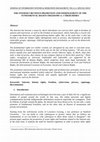
The Internet has become a mean by which individuals can exercise their right to freedom of opinio... more The Internet has become a mean by which individuals can exercise their right to freedom of opinion and expression, as well as the freedom of association, which, both play a crucial role in supporting democracy and guaranteeing human rights. But, at the same time, it also has become a mean for human rights infringement such as privacy, discrimination of specific vulnerable groups, espionage, child pornography and prostitution, as well as the democratic destabilization. The fundamental rights are neither created, nor abrogated by any state or non-state actor, being attached to humans at their birth only by the fact of being humans. "All men are by nature equally free and independent and have certain inherent rights, of which, when they enter a state of society, they cannot, by any compact, deprive or divest their posterity." These rights, recognized as universal, inalienable and indivisible, are supported by the International Bill of Human Rights, which comprises three main legal instruments: the Universal Declaration of Human Rights, the International Covenant on Civil and Political Rights, the International Covenant on Economic, Social and Cultural Rights. The promotion and protection of all human rights and of democratic principles serves as an international minimum standard widely enforced. Therefore, the framework of international human rights law remains relevant and equally applicable to new communication technologies, such as the Internet.
Hamangiu Publishing House, 2023
Romania is one of the main countries of origin for the victims of human trafficking in the EU. Al... more Romania is one of the main countries of origin for the victims of human trafficking in the EU. Although the constitutional law creates obligations for the Romanian Government to prevent and combat this serious crime, as well as to protect and assist victims of human trafficking, national legislation, policies, and measures are ineffective. For more than 20 years, Romania have proved that has not the capacity to implement the minimum international standards for the elimination of human trafficking. The current paper presents the challenges that Romania faces from the point of view of the implementation of the relevant international standards, the correlative obligations of the Romanian state, as well as relevant proposals for lege ferenda in order to implement an adequate response to the fight against human trafficking.

Trafficking in human beings a real threat to the national security. The main priorities of the European Union’s strategy towards the eradication of trafficking in human beings
Impact of Socio-economic and Technological Transformations at National, European and International Level, 2015
Human trafficking is a multifaceted crime and an illegal business that undermine the rule of law ... more Human trafficking is a multifaceted crime and an illegal business that undermine the rule of law and creates instability and insecurity. Over the last few decades, human trafficking has become the third largest transnational crime and a main source of income for criminal organizations at international level. Although this form of massive violation of human rights has been recognized and condemned by the international community, national authorities continue to develop policies that do not respond to the dynamics of this worldwide phenomenon, especially since many governments misunderstand this complex issue and implement ineffective mechanisms against human trafficking, as is the situation of Romania. Modern slavery destroys the life of victims and undermines the national economies, while generating billions of euro that come from illegal exploitation and abuse of the trafficked persons. Most often, the money from this type of crime are used to support other illegal activities such ...
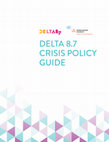
United Nations University, Apr 28, 2021
This Guide was written by Delta 8.7 Crisis Working Group as an original publication of Delta 8.7-... more This Guide was written by Delta 8.7 Crisis Working Group as an original publication of Delta 8.7-The Alliance 8.7 Knowledge Platform. Delta 8.7 is funded by the UK Home Office Modern Slavery Innovation Fund (MSIF). This publication was produced independently of the UK Home Office and any views expressed are those of the authors and do not represent the view of the British government. Special thanks go to the Delta 8.7 Crisis Working Group Chair, Katharine Bryant, and the Subgroup Leads, John Frame, Silvia Tabusca, Tina Davis, Patricia Hynes and Sophie Otiende, who were crucial in the creation and drafting of the Guide. Additional thanks to the Rights Lab, University of Nottingham, who were responsible for providing the primary research input into the Policy Guide process through their publication of the noncomprehensive evidence review. As provided for in the Terms and Conditions of Use of Delta 8.7, the opinions expressed in this Guide are those of the Working Group participants and do not necessarily reflect those of United Nations University or its partners.
Traficul De Persoane - O Ameninţare La Adresa Securităţii Naţionale. Priorităţile Strategiei Uniunii Europene Privind Eradicarea Traficului De Persoane (Trafficking in Human Beings a Real Threat to the National Security. The Main Priorities of the European Union’S Strategy Towards the Eradication...
Social Science Research Network, 2015
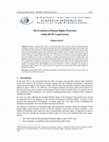
Having in mind the EU's policy to rebuild the democratic systems within the former European c... more Having in mind the EU's policy to rebuild the democratic systems within the former European communist countries and its involvement in international actions regarding human rights enforcement, there is no doubt about the importance of individuals rights protection in the European Union's legal system. In this respect, the present paper analyzes the evolution of the principle of EU's human rights protection. The research done on the EU legislation and courts' jurisprudence shows that there are three main stages related to the EU evolution of human rights protection: first-the rejection, by the ECJ, of human rights principle as part of Community Law; second-its acceptance, recognition and protection by the EU's judges; third-the regulation and monitoring of the fundamental rights and freedoms at the European level. Based mainly on the ECJ's jurisprudence, this paper tries to answer the following questions: What was the political motivation not to explicitly pro...

Since its creation, the Internet has been an important platform of information and communication,... more Since its creation, the Internet has been an important platform of information and communication, growing and becoming, in the same time, an indispensably part of our lives. The World Wide Web could not stay apart of many problems the society tries to cope with, such as the protection of fundamental rights. New context of technoglobalization and techno-capitalism means that there are new situations in which fundamental rights have to be defined, limited, ensured, and protected. In the very last years, there was started an international controversial debate on the issue of the Internet access as a fundamental right. It should not be conceived as a new and independent right, but rather as part of the freedom of expression. Key elements of the right to Internet access includes access to online media, equitable access to the means of online communication, the right to freely access online information, the right to be free of undue restrictions on content and privacy rights. However, even if we are in the era of promoting the Internet access as a fundamental right, there are many countries around the World which are not willing to recognize, respect and implement such a right, or they have no necessary infrastructure and financial resources to implement it.
It is well-known that being efficiency-oriented and utilitarian, the International Economic Law f... more It is well-known that being efficiency-oriented and utilitarian, the International Economic Law focuses on the market itself, while the human rights should protect the individual within the global economy. During the first part of the XXth century, human rights experts and their trade policy counterparts ignored each other. There was no interest about how international trade policy could affect protection
Valahian Journal of Economic Studies, 2018
The new realities brought on us by the growing usage of IoT devices should be paralleled by new s... more The new realities brought on us by the growing usage of IoT devices should be paralleled by new sets of paradigms and regulations, in order to not only accomplish the raise in the living standards of people but also to increase their level of human security. The IoT devices, as well as, in whole, the virtually completely internet connected society we live in today, need strong and clear rules and regulations, need laws that can help maintain and improve the cyber-security level. While being able to electronically track one’s children, by a multitude of IoT and other electronic devices, it is a great and useful feature we have to take into account that the same information, now shared over the internet, might also get into the wrong hands and lead to unpleasant or even dangerous situations.
Some Legal And Technical Aspects Related To Possible Internet’S Threats On The Fundamental Right To Private Property
Journal of Information Systems and Operations Management, 2011
Once an individual uses the modern means of payment, the credit cards, he must be aware of the po... more Once an individual uses the modern means of payment, the credit cards, he must be aware of the possible issue that might come out. Even more, when using these “plastic money” in the online environment provided by the omnipresent world wide web one must be aware that there are enough risk involved. The commodity and easy that came with the use of the credit card also brought us new threats, new ways in which our privacy and property might be affected.

The Evolution of Human Rights Principle within the EU Legal System
Abstract: Having in mind the EU’s policy to rebuild the democratic systems within the former Euro... more Abstract: Having in mind the EU’s policy to rebuild the democratic systems within the former European communist countries and its involvement in international actions regarding human rights enforcement, there is no doubt about the importance of individuals rights protection within the European Union’s legal system. In this respect, the present paper analyzes the evolution of the principle of EU’s human rights protection. The research done on the EU legislation and courts jurisprudence shows that there are three main stages related to the EU evolution of human rights protection: first – the rejection, by the ECJ, of human rights principle as part of Community law; second - its acceptance, recognition and protection by the EU’s judges; third - the regulation and monitoring of the fundamental rights and freedoms at the European level. Based mainly on the ECJ jurisprudence, the paper tries to answer the following questions: What was the political motivation not to explicitly protect hum...

The present paper, intended to be a book review, criticaly analises some aspects related to the s... more The present paper, intended to be a book review, criticaly analises some aspects related to the status and rights of indigenous peoples in Nigeria as they have beed presented by Olugbenga Ademodi in his book. „The Rights and Status of Indigenous Peoples in Nigeria”1examines whether "indigenous peoples" truly exist in this country and whether they are entitled to all of the rights enjoyed by their counterparts all over the world. The indigenous peoples' demands and the responses by modern nation-states comprise a number of different responses. There are conflicting claims between peoples claiming to be indigenous and the various governments where they reside. There is controversy over whether some groups are indigenous or whether they are simply minorities. This valuable book bridges the gap between the international protection of indigenous peoples and, spcificaly, the indigenous peoples of Africa.

Trafficking in Persons, a Threat to Human Security In The Developed Countries. The Case of European Union In the Era of Globalization
Since the end of the Cold War, the global integration of national economies has increased the flo... more Since the end of the Cold War, the global integration of national economies has increased the flow of goods, services, capital, and people. The European Union’s efforts to play an important economic role on the international scene led to its enlargement to 28 countries and to a better liberalization of the labour market.The actual economic, political, demographic and environmental international context made the EU an attractive place for regular and irregular migrants, as well as for internal migrants who seek employment far away from their home countries. During 2013, Eurostat reported that a total of 3.4 million people immigrated to one of the EU-28 Member States and, among these, about 6.1 thousand are stateless persons. On the 1st of January 2014, the number of people living in the EU who were citizens of non-member countries was 19.6 million, representing 3.9 % of the EU population, with a median age of 28 years. In addition, there were 14.3 million internal migrants living in ...
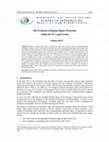
Having in mind the EU’s policy to rebuild the demo cratic systems within the former European comm... more Having in mind the EU’s policy to rebuild the demo cratic systems within the former European communist countries and its involvement in internat ional actions regarding human rights enforcement, t here is no doubt about the importance of individuals rig hts protection in the European Union’s legal system . In this respect, the present paper analyzes the evolution o f the principle of EU’s human rights protection. Th e research done on the EU legislation and courts’ jur isprudence shows that there are three main stages r elated to the EU evolution of human rights protection: first – he rejection, by the ECJ, of human rights princi ple as part of Community Law; second its acceptance, rec ognition and protection by the EU’s judges; third the regulation and monitoring of the fundamental rights and freedoms at the European level. Based mainly o n the ECJ’s jurisprudence, this paper tries to answer the following questions: What was the political motiva tion not to explicitly protect human...

Trafficking in Persons, a Threat to Human Security in the Developed Countries. The Case of European Union in the Era of Globalization
Since the end of the Cold War, the global integration of national economies has increased the flo... more Since the end of the Cold War, the global integration of national economies has increased the flow of goods, services, capital, and people. The European Union’s efforts to play an important economic role on the international scene led to its enlargement to 28 countries and to a better liberalization of the labour market.
The actual economic, political, demographic and environmental international context made the EU an attractive place for regular and irregular migrants, as well as for internal migrants who seek employment far away from their home countries. During 2013, Eurostat reported that a total of 3.4 million people immigrated to one of the EU-28 Member States and, among these, about 6.1 thousand are stateless persons. On the 1st of January 2014, the number of people living in the EU who were citizens of non-member countries was 19.6 million, representing 3.9 % of the EU population, with a median age of 28 years. In addition, there were 14.3 million internal migrants living in one of the EU Member States with the citizenship of another EU Member State [8].
The political and economic insecurity in Syria, Libya, Pakistan, and Afghanistan transformed Europe in a safer place for hundreds of thousands of refugees and irregular migrants. In 2013, Eurostat reported 435,000 asylum applications and in 2014 - 625 000, with a visibly increased number of asylum seekers for 2015 based on the large number of people that entered in Greece and Italy in the first part of this year.
According to the most recent Eurostat data, the labour migration to the EU is increasing every year. The largest number of migrants are low-skilled and unskilled workers in agriculture, manufacturing, construction, domestic work and services. This large phenomenon of labour mobility to EU comes, in some cases, with abusive and fraudulent employment practices, which increase the recruited persons’ risk to end up in a form of labour or sexual exploitation. In 2014, the debates on the legal documents adopted at the 103rd International Labour Conference established the clear link between human trafficking and forced labour. There is a shared international responsibility of governments and employers to protect workers against fraudulent and abusive practices that may end up in a form of modern slavery.
It is accepted that the most developed countries are the world’s largest markets for illicit goods and services. Corruption, coercion, and effective logistics of criminal networks made transnational organized crime one of the world’s most sophisticated and profitable businesses. Since trafficking in persons is a transnational crime, EU states have to look beyond their borders to disrupt both the demand markets and the criminal groups in order to protect their sovereignty, to strengthen their security and the rule of law.
This research paper highlights the relationship between lack of clear regulation on labour migration and some cases of human trafficking. It presents trafficking in persons as a real threat to human security in the EU developed countries and, also, the governments’ incapacity to protect their people against transnational organized crime. Nowadays, Europe faces the situation of the largest number of refugees and irregular migrants after the Second World War. These people are extremely vulnerable to trafficking for forced labour and sexual exploitation. As modern slavery became a threat that affects all the EU Member States, they have a shared responsibility to respond to this phenomenon. Are they able to seek new and innovative strategies? Are the EU institutions and the member states’ governments capable to find effective responses to human trafficking? These are some main questions that the paper aims to respond to.
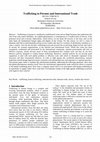
Trafficking in persons is considered a multifaceted crime and an illegal business that undermines... more Trafficking in persons is considered a multifaceted crime and an illegal business that undermines the rule of law and creates instability. As a global phenomenon, a contemporary or a modern form of slavery, it has profound social and economic implications, which affects, on one hand, the security of the state, and, on the other hand, the fundamental human rights and dignity of the victims. For this reason, we call it a form of inhuman trade that is internationally present in any country that may be a territory of destination, transition or a source country. Over the last decades, trafficking in persons became the second large illegal activity and source of income for criminal organizations, at the national and international levels. While this crime has been recognized, condemned and prosecuted by the international community, national governments still lack an effective response, mainly because many of them misunderstand this complex issue and they do not have effective policies designed to combat human trafficking. Moreover, national policies do not provide good regulations to deal with such global problem or effective tools with which to dismantle organized crime structures and their transnational alliances. In order to fight against this worldwide phenomenon, national authorities should design legal provisions consistent with international law and responsive to national specifics. The present paper seeks to examine this international problem, addressing the following questions: How does this global phenomenon manifest itself? Does the international organizations make sufficient efforts to respond to the human trafficking issue? How does a company ensure there is no association with human trafficking in its operations or supply chain? How weak does Governments remain in the fight against trafficking in persons with regard to their citizens?


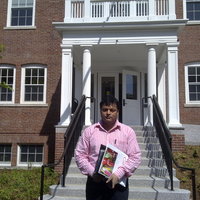








Uploads
Books by Silvia Tabusca, PhD
“Silvia Tabusca's book on the Roma peoples and their culture is a fascinating account of the history and life of communities radically different from mainstream modern society and its guiding lights. With appealing deep sympathy for the human beings involved, the author makes a compelling case for putting an end to the ubiquitous historic injustices of discrimination and for the tailoring of a legal regime to the specific needs and aspirations of the Roma, based on the global appreciation of cultural diversity within the framework of a world public order of human dignity”.
Professor Dr. iur. Siegfried Wiessner, Director, Graduate Program in Intercultural Human Rights, St. Thomas University School of Law, Miami, Florida; former Chair of the International Law Association's Committee on the Rights of Indigenous Peoples"
Aderarea Uniunii Europene la Convenţie asigură un standard de protecţie a drepturilor omului şi libertăţilor fundamentale unitar şi comun întregii Europe. Prezenta şi viitoarea relaţie dintre Curtea Europeană a Drepturilor Omului şi Curtea de Justiţie a Uniunii Europene reprezintă o preocupare majoră ca urmare a adoptării, în martie 2011, a Acordului privind aderarea UE la Convenţie şi a reglementării controlului extern asupra hotărârilor Curţii de Justiţie a Uniunii Europene realizat de instanţa de la Strasbourg, fără ca acesta să afecteze în mod negativ autonomia Uniunii şi pe cea a Curţii.
Recomand călduros lucrarea de faţă care examinează locul şi rolul instanţelor de judecată în arhitectura judiciară europeană, interacţiunea celor trei sisteme diferite de drept aplicabile simultan în România (sistemul de drept european al Convenţiei cu jurisprudenţa Curţii Europene, sistemul de drept al Uniunii Europene cu jurisprudenţa Curţii de Justiţie şi sistemul naţional de drept), precum şi recentele evoluţii semnificative ale standardelor europene minime de garantare a drepturilor omului, cu specială privire asupra dreptului la nediscriminare".
- jud. Cristi Danileț, membru al Consiliului Superior al Magistraturii
„În contextul politico-juridic actual, creat de negocierile Acordului privind aderarea Uniunii Europene la Convenţia pentru apărarea drepturilor omului şi a libertăţilor fundamentale, putem afirma că literatura de specialitate consacrată protecţiei drepturilor individului în plan paneuropean, cu specială privire asupra principiului egalităţii, se îmbogăţeşte cu o nouă lucrare de un incontestabil interes teoretic şi practic.
Autoarea îşi propune să analizeze critic şi comparativ, astfel după cum precizează de la bun început, implicaţiile şi efectele pe care le au hotărârile celor două mari jurisdicţii europene, Curtea de la Strasbourg şi Curtea de Justiţie a Uniunii Europene de la Luxembourg, fiecare cu competenţe precis determinate ce îşi pun pecetea asupra modului de interpretare şi de aplicare a normelor juridice naţionale în materia protecţiei drepturilor şi libertăţilor fundamentale, în special din punctul de vedere „al respectării standardelor minime de garantare a principiului egalităţii şi a dreptului la nediscriminare”.
Lucrarea este structurată în şase capitole, după cum urmează. În primul capitol autoarea prezintă unele consideraţii generale privind noţiunile de egalitate şi de nediscriminare. Ea arată că egalitatea este atât de ordin moral, „dată de natură”, cât şi un drept subiectiv al individului, „natural şi inalienabil” şi că discriminarea reprezintă „o formă de negare a egalităţii”. Apoi analizează, în cadrul aceluiaşi capitol, modul cum sunt garantate principiul egalităţii şi dreptul la nediscriminare în dreptul comparat, adică atât în cadrul diferitelor sisteme de protecţie universală şi regională a drepturilor omului, cât şi în materia dreptului civil, ca ramură a sistemelor naţionale de drept.
Cel de al doilea capitol al lucrării este consacrat cercetării principiului egalităţii în cadrul Convenţiei europene a drepturilor omului, astfel cum acesta este prevăzut de art. 14, text ce interzice orice formă de discriminare în exerciţiul drepturilor şi libertăţilor garantate de Convenţie şi de protocoalele sale adiţionale. De asemenea, sunt analizate, în cadrul aceluiaşi capitol, dispoziţiile relativ recentului Protocol nr. 12 la Convenţie, care interzice orice formă de discriminare în exercitarea tuturor drepturilor prevăzute de legea naţională. În al treilea capitol al lucrării este analizat modul în care se reflectă principiul egalităţii în dreptul Uniunii Europene. Având în vedere scopul pentru care au fost create comunităţile europene, devenite în prezent Uniunea Europeană, autoarea prezintă evoluţia protecţiei drepturilor şi libertăţilor fundamentale ale omului mai întâi în dreptul comunitar şi apoi în dreptul Uniunii Europene, cu specială privire asupra interpretării şi aplicării dreptului la nediscriminare consacrat de textele Tratatului privind Uniunea Europeană şi de Carta drepturilor fundamentale a Uniunii, precum şi în jurisprudenţa Curţii de Justiţie de la Luxembourg.
După cercetarea cadrului internaţional în materie, în cel de al patrulea capitol autoarea prezintă modul în care este asigurată respectarea principiului egalităţii în sistemul naţional de drept. Sunt analizate atât dispoziţiile constituţionale, cât şi cele ale altor legi în domeniu, prin raportare permanentă la jurisprudenţa Curţii Constituţionale, a Consiliului Naţional pentru Combaterea Discriminării, a Înaltei Curţii de Casaţie şi Justiţie şi a altor instanţe judecătoreşti.
Cel de-al cincilea capitol al lucrării este consacrat cercetării raportului între ordinea juridică naţională şi ordinea juridică internaţională regională europeană privitoare la respectarea principiului nediscriminării. În cadrul acestui capitol autoarea demonstrează specificitatea „autorităţii de lucru interpretat” a hotărârilor jurisdicţiilor europene cunoscute. Lucrarea se încheie cu un capitol în care sunt formulate consideraţii finale şi propuneri de lege ferenda.
Prezentul volum se înfăţişează ca o adevărată lucrare de cercetare ştiinţifică, cu valenţele unei monografii interesante şi de actualitate, cu profunde implicaţii teoretice şi, mai cu seamă, practice. Studiind o bogată literatură de specialitate naţională şi internaţională, precum şi un impresionant număr de hotărâri judecătoreşti, toate valorificate în mod corespunzător, autoarea a reuşit cu seriozitate şi reale calităţi de cercetător ştiinţific să elaboreze o monografie caracterizată prin originalitate, noutate, interdisciplinaritate şi internaţionalitate.
Lucrarea se prezintă ca o pledoarie în favoarea respectării, de către judecătorul naţional, a standardelor minimale identificate la nivelul celor două jurisdicţii europene în materia protejării drepturilor omului”.
- Prof.univ.dr. Corneliu Bîrsan, judecător al Curții Europene a Drepturilor Omului
Recentele modificări ale dispoziţiilor art. 6 alin. (2) din Tratatul privind Uniunea Europeană, aşa cum acesta a fost completat de Tratatul de la Lisabona, statuează că „Uniunea aderă la Convenţia pentru apărarea drepturilor omului şi a libertăţilor fundamentale”. Curtea de Justiţie a Uniunii Europene va coopera, într-un cadru juridic modern oferit de viitorul Acord de aderare a UE la Convenţie, cu instanţa de la Strasbourg, conform principiului complementarităţii. În ultimele decenii, judecătorul instanţei de la Luxembourg s-a prevalat, în motivarea hotărârilor sale privitoare la protecţia drepturilor individului, de jurisprudenţa Curţii Europene a Drepturilor Omului. În acest context, prezintă interes pentru teoreticienii şi practicienii dreptului atât raportul dintre cele două instanţe europene, cât şi relaţia dintre acestea şi ordinea juridică naţională a fiecărui stat membru al UE."""
Papers by Silvia Tabusca, PhD
The actual economic, political, demographic and environmental international context made the EU an attractive place for regular and irregular migrants, as well as for internal migrants who seek employment far away from their home countries. During 2013, Eurostat reported that a total of 3.4 million people immigrated to one of the EU-28 Member States and, among these, about 6.1 thousand are stateless persons. On the 1st of January 2014, the number of people living in the EU who were citizens of non-member countries was 19.6 million, representing 3.9 % of the EU population, with a median age of 28 years. In addition, there were 14.3 million internal migrants living in one of the EU Member States with the citizenship of another EU Member State [8].
The political and economic insecurity in Syria, Libya, Pakistan, and Afghanistan transformed Europe in a safer place for hundreds of thousands of refugees and irregular migrants. In 2013, Eurostat reported 435,000 asylum applications and in 2014 - 625 000, with a visibly increased number of asylum seekers for 2015 based on the large number of people that entered in Greece and Italy in the first part of this year.
According to the most recent Eurostat data, the labour migration to the EU is increasing every year. The largest number of migrants are low-skilled and unskilled workers in agriculture, manufacturing, construction, domestic work and services. This large phenomenon of labour mobility to EU comes, in some cases, with abusive and fraudulent employment practices, which increase the recruited persons’ risk to end up in a form of labour or sexual exploitation. In 2014, the debates on the legal documents adopted at the 103rd International Labour Conference established the clear link between human trafficking and forced labour. There is a shared international responsibility of governments and employers to protect workers against fraudulent and abusive practices that may end up in a form of modern slavery.
It is accepted that the most developed countries are the world’s largest markets for illicit goods and services. Corruption, coercion, and effective logistics of criminal networks made transnational organized crime one of the world’s most sophisticated and profitable businesses. Since trafficking in persons is a transnational crime, EU states have to look beyond their borders to disrupt both the demand markets and the criminal groups in order to protect their sovereignty, to strengthen their security and the rule of law.
This research paper highlights the relationship between lack of clear regulation on labour migration and some cases of human trafficking. It presents trafficking in persons as a real threat to human security in the EU developed countries and, also, the governments’ incapacity to protect their people against transnational organized crime. Nowadays, Europe faces the situation of the largest number of refugees and irregular migrants after the Second World War. These people are extremely vulnerable to trafficking for forced labour and sexual exploitation. As modern slavery became a threat that affects all the EU Member States, they have a shared responsibility to respond to this phenomenon. Are they able to seek new and innovative strategies? Are the EU institutions and the member states’ governments capable to find effective responses to human trafficking? These are some main questions that the paper aims to respond to.
“Silvia Tabusca's book on the Roma peoples and their culture is a fascinating account of the history and life of communities radically different from mainstream modern society and its guiding lights. With appealing deep sympathy for the human beings involved, the author makes a compelling case for putting an end to the ubiquitous historic injustices of discrimination and for the tailoring of a legal regime to the specific needs and aspirations of the Roma, based on the global appreciation of cultural diversity within the framework of a world public order of human dignity”.
Professor Dr. iur. Siegfried Wiessner, Director, Graduate Program in Intercultural Human Rights, St. Thomas University School of Law, Miami, Florida; former Chair of the International Law Association's Committee on the Rights of Indigenous Peoples"
Aderarea Uniunii Europene la Convenţie asigură un standard de protecţie a drepturilor omului şi libertăţilor fundamentale unitar şi comun întregii Europe. Prezenta şi viitoarea relaţie dintre Curtea Europeană a Drepturilor Omului şi Curtea de Justiţie a Uniunii Europene reprezintă o preocupare majoră ca urmare a adoptării, în martie 2011, a Acordului privind aderarea UE la Convenţie şi a reglementării controlului extern asupra hotărârilor Curţii de Justiţie a Uniunii Europene realizat de instanţa de la Strasbourg, fără ca acesta să afecteze în mod negativ autonomia Uniunii şi pe cea a Curţii.
Recomand călduros lucrarea de faţă care examinează locul şi rolul instanţelor de judecată în arhitectura judiciară europeană, interacţiunea celor trei sisteme diferite de drept aplicabile simultan în România (sistemul de drept european al Convenţiei cu jurisprudenţa Curţii Europene, sistemul de drept al Uniunii Europene cu jurisprudenţa Curţii de Justiţie şi sistemul naţional de drept), precum şi recentele evoluţii semnificative ale standardelor europene minime de garantare a drepturilor omului, cu specială privire asupra dreptului la nediscriminare".
- jud. Cristi Danileț, membru al Consiliului Superior al Magistraturii
„În contextul politico-juridic actual, creat de negocierile Acordului privind aderarea Uniunii Europene la Convenţia pentru apărarea drepturilor omului şi a libertăţilor fundamentale, putem afirma că literatura de specialitate consacrată protecţiei drepturilor individului în plan paneuropean, cu specială privire asupra principiului egalităţii, se îmbogăţeşte cu o nouă lucrare de un incontestabil interes teoretic şi practic.
Autoarea îşi propune să analizeze critic şi comparativ, astfel după cum precizează de la bun început, implicaţiile şi efectele pe care le au hotărârile celor două mari jurisdicţii europene, Curtea de la Strasbourg şi Curtea de Justiţie a Uniunii Europene de la Luxembourg, fiecare cu competenţe precis determinate ce îşi pun pecetea asupra modului de interpretare şi de aplicare a normelor juridice naţionale în materia protecţiei drepturilor şi libertăţilor fundamentale, în special din punctul de vedere „al respectării standardelor minime de garantare a principiului egalităţii şi a dreptului la nediscriminare”.
Lucrarea este structurată în şase capitole, după cum urmează. În primul capitol autoarea prezintă unele consideraţii generale privind noţiunile de egalitate şi de nediscriminare. Ea arată că egalitatea este atât de ordin moral, „dată de natură”, cât şi un drept subiectiv al individului, „natural şi inalienabil” şi că discriminarea reprezintă „o formă de negare a egalităţii”. Apoi analizează, în cadrul aceluiaşi capitol, modul cum sunt garantate principiul egalităţii şi dreptul la nediscriminare în dreptul comparat, adică atât în cadrul diferitelor sisteme de protecţie universală şi regională a drepturilor omului, cât şi în materia dreptului civil, ca ramură a sistemelor naţionale de drept.
Cel de al doilea capitol al lucrării este consacrat cercetării principiului egalităţii în cadrul Convenţiei europene a drepturilor omului, astfel cum acesta este prevăzut de art. 14, text ce interzice orice formă de discriminare în exerciţiul drepturilor şi libertăţilor garantate de Convenţie şi de protocoalele sale adiţionale. De asemenea, sunt analizate, în cadrul aceluiaşi capitol, dispoziţiile relativ recentului Protocol nr. 12 la Convenţie, care interzice orice formă de discriminare în exercitarea tuturor drepturilor prevăzute de legea naţională. În al treilea capitol al lucrării este analizat modul în care se reflectă principiul egalităţii în dreptul Uniunii Europene. Având în vedere scopul pentru care au fost create comunităţile europene, devenite în prezent Uniunea Europeană, autoarea prezintă evoluţia protecţiei drepturilor şi libertăţilor fundamentale ale omului mai întâi în dreptul comunitar şi apoi în dreptul Uniunii Europene, cu specială privire asupra interpretării şi aplicării dreptului la nediscriminare consacrat de textele Tratatului privind Uniunea Europeană şi de Carta drepturilor fundamentale a Uniunii, precum şi în jurisprudenţa Curţii de Justiţie de la Luxembourg.
După cercetarea cadrului internaţional în materie, în cel de al patrulea capitol autoarea prezintă modul în care este asigurată respectarea principiului egalităţii în sistemul naţional de drept. Sunt analizate atât dispoziţiile constituţionale, cât şi cele ale altor legi în domeniu, prin raportare permanentă la jurisprudenţa Curţii Constituţionale, a Consiliului Naţional pentru Combaterea Discriminării, a Înaltei Curţii de Casaţie şi Justiţie şi a altor instanţe judecătoreşti.
Cel de-al cincilea capitol al lucrării este consacrat cercetării raportului între ordinea juridică naţională şi ordinea juridică internaţională regională europeană privitoare la respectarea principiului nediscriminării. În cadrul acestui capitol autoarea demonstrează specificitatea „autorităţii de lucru interpretat” a hotărârilor jurisdicţiilor europene cunoscute. Lucrarea se încheie cu un capitol în care sunt formulate consideraţii finale şi propuneri de lege ferenda.
Prezentul volum se înfăţişează ca o adevărată lucrare de cercetare ştiinţifică, cu valenţele unei monografii interesante şi de actualitate, cu profunde implicaţii teoretice şi, mai cu seamă, practice. Studiind o bogată literatură de specialitate naţională şi internaţională, precum şi un impresionant număr de hotărâri judecătoreşti, toate valorificate în mod corespunzător, autoarea a reuşit cu seriozitate şi reale calităţi de cercetător ştiinţific să elaboreze o monografie caracterizată prin originalitate, noutate, interdisciplinaritate şi internaţionalitate.
Lucrarea se prezintă ca o pledoarie în favoarea respectării, de către judecătorul naţional, a standardelor minimale identificate la nivelul celor două jurisdicţii europene în materia protejării drepturilor omului”.
- Prof.univ.dr. Corneliu Bîrsan, judecător al Curții Europene a Drepturilor Omului
Recentele modificări ale dispoziţiilor art. 6 alin. (2) din Tratatul privind Uniunea Europeană, aşa cum acesta a fost completat de Tratatul de la Lisabona, statuează că „Uniunea aderă la Convenţia pentru apărarea drepturilor omului şi a libertăţilor fundamentale”. Curtea de Justiţie a Uniunii Europene va coopera, într-un cadru juridic modern oferit de viitorul Acord de aderare a UE la Convenţie, cu instanţa de la Strasbourg, conform principiului complementarităţii. În ultimele decenii, judecătorul instanţei de la Luxembourg s-a prevalat, în motivarea hotărârilor sale privitoare la protecţia drepturilor individului, de jurisprudenţa Curţii Europene a Drepturilor Omului. În acest context, prezintă interes pentru teoreticienii şi practicienii dreptului atât raportul dintre cele două instanţe europene, cât şi relaţia dintre acestea şi ordinea juridică naţională a fiecărui stat membru al UE."""
The actual economic, political, demographic and environmental international context made the EU an attractive place for regular and irregular migrants, as well as for internal migrants who seek employment far away from their home countries. During 2013, Eurostat reported that a total of 3.4 million people immigrated to one of the EU-28 Member States and, among these, about 6.1 thousand are stateless persons. On the 1st of January 2014, the number of people living in the EU who were citizens of non-member countries was 19.6 million, representing 3.9 % of the EU population, with a median age of 28 years. In addition, there were 14.3 million internal migrants living in one of the EU Member States with the citizenship of another EU Member State [8].
The political and economic insecurity in Syria, Libya, Pakistan, and Afghanistan transformed Europe in a safer place for hundreds of thousands of refugees and irregular migrants. In 2013, Eurostat reported 435,000 asylum applications and in 2014 - 625 000, with a visibly increased number of asylum seekers for 2015 based on the large number of people that entered in Greece and Italy in the first part of this year.
According to the most recent Eurostat data, the labour migration to the EU is increasing every year. The largest number of migrants are low-skilled and unskilled workers in agriculture, manufacturing, construction, domestic work and services. This large phenomenon of labour mobility to EU comes, in some cases, with abusive and fraudulent employment practices, which increase the recruited persons’ risk to end up in a form of labour or sexual exploitation. In 2014, the debates on the legal documents adopted at the 103rd International Labour Conference established the clear link between human trafficking and forced labour. There is a shared international responsibility of governments and employers to protect workers against fraudulent and abusive practices that may end up in a form of modern slavery.
It is accepted that the most developed countries are the world’s largest markets for illicit goods and services. Corruption, coercion, and effective logistics of criminal networks made transnational organized crime one of the world’s most sophisticated and profitable businesses. Since trafficking in persons is a transnational crime, EU states have to look beyond their borders to disrupt both the demand markets and the criminal groups in order to protect their sovereignty, to strengthen their security and the rule of law.
This research paper highlights the relationship between lack of clear regulation on labour migration and some cases of human trafficking. It presents trafficking in persons as a real threat to human security in the EU developed countries and, also, the governments’ incapacity to protect their people against transnational organized crime. Nowadays, Europe faces the situation of the largest number of refugees and irregular migrants after the Second World War. These people are extremely vulnerable to trafficking for forced labour and sexual exploitation. As modern slavery became a threat that affects all the EU Member States, they have a shared responsibility to respond to this phenomenon. Are they able to seek new and innovative strategies? Are the EU institutions and the member states’ governments capable to find effective responses to human trafficking? These are some main questions that the paper aims to respond to.
Europe is home to 10–12 million Roma and Travellers, yet many Europeans are unable to answer the basic question, “Who are the Roma?” Even fewer can answer questions about their history.
It is a complex and highly contested narrative, partly because the “Roma” are not a single, homogeneous group of people. They can include Romanichals in England; Kalé in Wales and Finland; Travellers in Ireland (who are not Roma), Scotland, Sweden, and Norway; Manouche from France; Gitano from Spain; Sinti from Germany, Poland, Austria and Italy; Ashakli from Kosovo; Egyptians from Albania; Beyash from Croatia; Romanlar from Turkey; Domari from Palestine and Egypt; Lom from Armenia and many others. It is also partly because many of these groups have differing narratives of their history and ethnogenesis (their origins as an ethnic group).
The Roma do not follow a single faith, but are Catholic Manouche, Mercheros and Sinti; Muslim Ashkali and Romanlar; Pentecostal Kalderash and Lovari; Protestant Travellers; Anglican Gypsies; and Baptist Roma. There are variations in practises associated with birth, marriages and death, yet also linked cultures that display subtle but distinctive patterns or, as a Roma preacher once described it, “many stars scattered in the sight of God.”
Yet there is much that is shared between different groups of Roma. Roma have a common lexicon in differing dialects of Rromanës, the Romani language. There are common notions around cleanliness codes and behaviours regarding what is Rromano (to behave with dignity and respect as a Roma person) and what can be seen as part of Rromanipé or the “Romani world view.”
Roma groups often have similar occupations, drawing upon traditions of peripatetic and mobile economies that exploit niche markets, such as peddling and trading certain livestock (horses, dogs, and small birds). Roma artisans have also made livings from repairing items deemed “uneconomic” to mend, such as pocket watches, tea-pots and porcelain dishes—the originators of what is now described as the circular economy. Many Roma, Gypsies, and Travellers are engaged in recycling and have been for centuries, long before major environmental concerns. We were also healers and herbalists for the “country people.”
Mobility has, for many Roma, been part and parcel of identity. It’s “not all waggons and horses” though and Roma have been engaged with agriculture (as they still are in many places), artisan skills and automobiles trading, road repairs and roofing. Metal work of all kinds has always been part of the Roma economy, as has craft production (baskets and bamboo furniture, knives’ handles, carved and decorated waggons, fairground signs). Many groups’ names actually stem from occupations—the Balkan Sepetçiler are basket-makers (from the Turkish term for woven baskets) and represent a commercial skill that was used as the basis for organizing taxable communities in the past. Diversity in and amongst Roma groups has its origins in occupational identity, as much as in any other distinctions of culture.
What “binds” or unites the communities in all this rich diversity? The idea of a common heritage of exclusion certainly contributes to the sense of shared “pasts”—the notion of always being the “outsider”, the “other.” There are connections too in the languages; the important words for water, bread, road, blessings, luck, greetings and farewells can be common to Rromanës dialects. Terms for horses, tools, numbers and others are sometimes close enough in many cases that one Roma person can “trade” them with another—a favourite game in many communities, as language holds the “key” to our past in its core and “loan words”, gathered over time and migration routes. Language experts have identified these commonalities and drawn from this heritage to illuminate this shared past and heritage.
The notion of the historical journey, the narrative of “the long road of the Roma” over 1,000 years since leaving the Indian lands, is also strong in many Roma groups as a component of identity, with good evidence to support this. Just as not all Italians are descended from Romans and Etruscans, not all Roma groups are direct descendants of Hindus from the Punjab or Ganges basin. However, the point of the “imagined community” is not that it is literally a fiction, but rather that it is symbolically meaningful and has a purpose in bringing together individuals around common ideas of heritage and belonging to which broadly, we can subscribe. The Roma, in this sense are a people like any other, dispersed across many lands and territories over time and circumstance.
The remarkable thing is that (as a famous historian of the Gypsies once noted), unlike many other peoples in this context, we have no one priesthood, no single holy book, no promised land to return to and yet we not only endure and survive, we truly live in the world. The need is to go beyond this and to flourish, to achieve equality and emancipation from poverty, exclusion and misery, to become full citizens in the lands we inhabit and to achieve the kind of potential that the creative genius of our existence so far, clearly suggests we can reach.
""
Our event’s main goal is to promote human rights and security of the vulnerable groups, especially the rights of women and children, thus stimulating civil society to enhance the rule of law by welcoming citizen participation, offering debates and trainings based on a human rights approach to key stakeholders involved in combating trafficking in persons and protection of the victims.
The project’s aim is to be an annually debate (and a training) forum in order to facilitate a stronger and more coordinated response to human trafficking in Romania and in Europe. It promotes the human rights approach to countering trafficking in persons and a better protection of the victims.